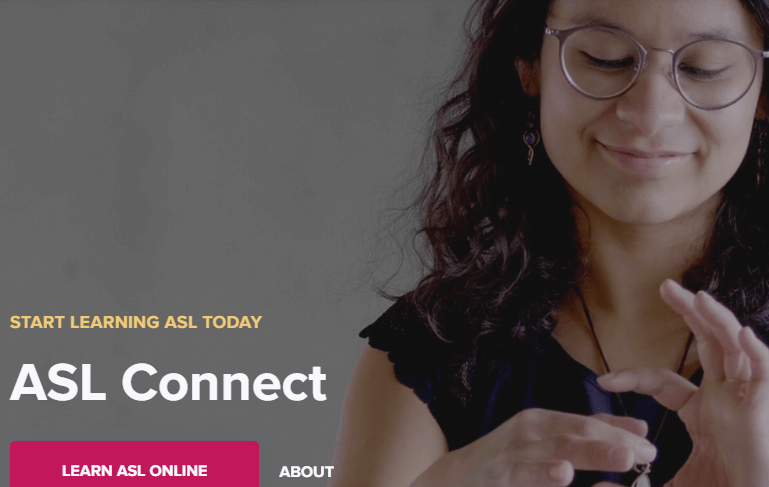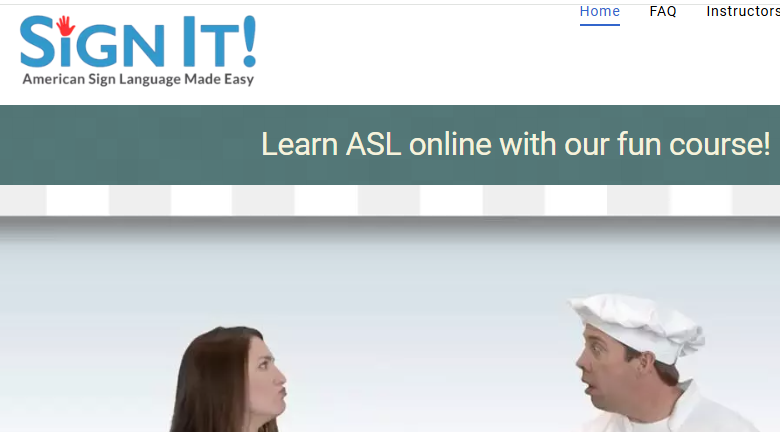Learning sign language isn’t just about picking up a new skill—it’s a gateway to a richer social world. Sign language can open doors to more meaningful interactions with others, and honestly, it just makes life a whole lot easier when communication barriers are down.
For adults who are hard of hearing, sign language can significantly boost confidence and independence.
Imagine not having to rely on others to understand you. No more feeling left out in group settings or public spaces where listening can be a challenge. It can make conversations with friends and family seamless, more fun, and less stressful.
Sign language isn’t just a tool for communication—it’s also deeply rooted in cultural and historical significance. It’s an irreplaceable part of Deaf culture and represents not only a language but a community with shared experiences. Engaging with this rich heritage can also foster a greater sense of belonging, providing a connection to a vibrant, supportive community.
Sign language can be a powerful way for many to express themselves fully and authentically. By learning it, you’re not just learning to communicate more effectively, you’re embracing a whole new way of thinking and interacting with the world.
Before we talk about the top criteria when selecting a sign language course, let’s talk a bit about the history of sign language.
The History and Evolution of Sign Language
Sign language has a rich and fascinating history that dates back centuries, evolving alongside the needs and rights of the deaf and hard-of-hearing communities.
While gestures and visual communication have likely existed since early human history, formalized systems of sign language began to emerge in the 17th century.
Early Development
One of the earliest documented instances of organized sign language comes from Spain in the 1500s.
A Spanish monk, Pedro Ponce de León, is credited with teaching deaf children using a form of sign language, helping them communicate and learn to write.
In France, Abbé Charles-Michel de l’Épée took this a step further in the 1700s, founding the first public school for the deaf in Paris and developing a system of hand signs that would eventually evolve into modern French Sign Language (LSF).
The Birth of American Sign Language (ASL)
American Sign Language (ASL) has its roots in the early 19th century, when Thomas Hopkins Gallaudet, an American educator, traveled to Europe to study methods of educating the deaf.
He brought back the teachings of Abbé de l’Épée’s system from France and adapted it, merging it with indigenous sign systems already used by deaf communities in the U.S.
This blend laid the foundation for ASL, which has since become one of the most widely used sign languages in the world.

Evolution and Recognition
Throughout the 20th century, sign languages around the world faced significant challenges, as oralist methods—focused on teaching deaf individuals to speak and lip-read—dominated the educational systems.
This often led to sign language being discouraged or outright banned.
In 1960, ASL was formally recognized as a language by linguist William Stokoe, which marked a turning point in its legitimacy as a linguistic system.
Today, sign languages such as ASL, British Sign Language (BSL), and others are recognized and respected as vital tools of communication.
The Future of Sign Language
In recent years, sign language has seen increased visibility due to advancements in technology and media representation.
Platforms like social media, YouTube, and virtual classrooms are making it easier for people around the world to access sign language education. Innovations in AI and machine learning are also being explored to improve real-time sign language translation.
Facts and Stats
– There are over 300 different sign languages used around the world, each with its unique structure and vocabulary.
– ASL is the third most commonly used language in the U.S., after English and Spanish.
– According to the World Federation of the Deaf, there are an estimated 70 million deaf people worldwide, with over 80% living in developing countries.
– Studies show that early exposure to sign language, even for children with hearing parents, enhances cognitive development and provides a foundation for bilingualism.
As awareness grows, more educational resources and courses are becoming available for those looking to learn sign language, making it more accessible than ever for adults, including those who are hard of hearing.
Recommended Reading: Musicians Hearing Loss and What to Do About It
Top Criteria for Choosing a Sign Language Course
Finding the right sign language course can feel a bit like finding the perfect song. It has to resonate with your learning style and pace.
One key thing to watch out for is the course structure. Make sure it’s clear, engaging, and suits your lifestyle. Whether you’re a night owl or an early bird, having flexible scheduling can make a huge difference.
Instructor accreditation is non-negotiable.
Qualified instructors with real-life experience can provide insights beyond textbook learning. They bring the language to life, weaving in cultural nuances and teaching the language in a meaningful way. This depth of understanding is essential.
Think about how you learn best.
Are you more of a visual or interactive learner?
Some courses offer video materials, while others involve group activities and more hands-on practice.
With so many online platforms, like Zoom and dedicated educational apps, you can find something that matches your preferences. And let’s be real, in today’s world, having the option for online learning is a big plus.
Accessibility is crucial too.
The digital tools and platforms used must be easy to navigate, ensuring everyone, regardless of their tech skills, can fully participate without hassle. Consider if the course has good customer support and resources.
Take the time to ensure that the course is not only accessible but inclusive, supporting your unique learning journey.
Making sure these criteria are in place will set you up for success in mastering sign language.
Review of the Best Sign Language Courses Available Today
Top Sign Language Courses for Hard of Hearing Adults
For adults who are hard of hearing, learning sign language can be an empowering step toward better communication and connecting with the deaf community.
Below are two highly recommended sign language courses that offer flexible learning options for individuals of all skill levels.
1. Gallaudet University’s Online ASL Courses
Gallaudet University, renowned for its commitment to deaf education, offers comprehensive online American Sign Language (ASL) courses.

These courses are designed to accommodate beginners as well as more advanced learners.
Through their online platform, you’ll learn foundational signs, ASL grammar, and deaf culture, all taught by qualified instructors who are native ASL users. This course is perfect for those looking for an immersive experience and a deeper understanding of ASL.
Learn more here: Gallaudet University ASL
2. Start ASL – Complete Online Course
Start ASL is an accessible and affordable option that offers a complete online ASL course. Their structured curriculum allows you to learn at your own pace, covering everything from basic signs to conversational fluency.

With a range of learning materials, including video lessons and quizzes, this course is designed to fit into busy adult schedules.
Start ASL also fosters a supportive online community where learners can practice and interact with others.
Check it out here: Start ASL Online
Both of these programs offer the flexibility and accessibility needed for adult learners, allowing you to gain practical sign language skills at your own pace.
Whether you’re looking to enhance your communication in daily life or deepen your understanding of ASL, these courses are excellent starting points.
Then there is another sign language course that I am going to add to the list.
Many participants appreciate the interactive nature of Sign It ASL, which uses dynamic video content and quizzes to keep students engaged and motivated.

An array of testimonials highlights how participants felt more confident and connected after completing these courses.
Certification opportunities can be a game changer for those looking to use sign language professionally.
Check It Out Here: SignItASL.com
Some courses provide pathways to accreditation, proving your skills to potential employers or educational institutions.
This is key if your goal is to work in environments where sign language is a critical asset.
Enhancing Your Learning Journey Beyond the Course
Once you’ve got the basics of sign language down, it’s key to keep practicing to get those skills sharp.
Daily practice can be as simple as incorporating sign language into your regular conversations or signing along with videos.
If you wanna enhance your understanding, dive into the community.
Online forums and local events can connect you with others who are just as passionate about sign language. Not only can you learn new things, but you’ll also make some great friends along the way.
Don’t forget about all the handy resources at your fingertips.
There are tons of books, apps like ‘The ASL App’, and video channels dedicated to signing language learning.
These can provide fresh content and new vocabulary to expand your skills beyond what you’ve learned in the course.
To truly immerse yourself, volunteering with organizations that support the Deaf and hard of hearing can be incredibly rewarding.
You get to put your skills to use in real-world settings while giving back to the community.
Also, these immersive experiences can significantly enhance your fluency and confidence.
Conclusion – What Is Your Next Move?
Are you ready to learn sign language? Will you be trying out one of the resources that I mentioned above?
What spurred you on to learn sign language?
Share your story below.
Looking forward to hearing from you.
Regards and Take Care
Roopesh
